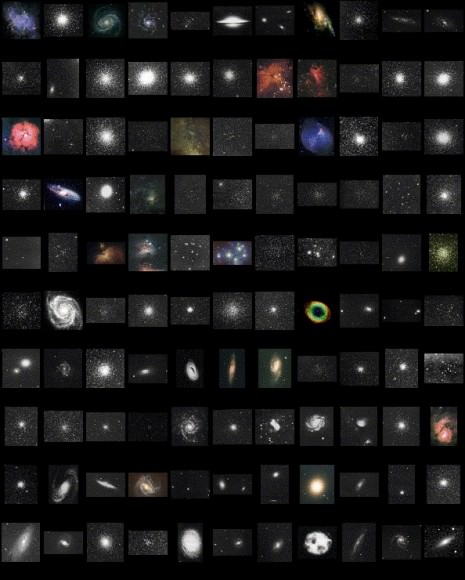If the skies are clear:
MESSIER MARATHON: LECTURE and MARATHON BY FOUNDER, TOM HOFFELDER
If the skies are cloudy:
LECTURE ON TELESCOPE HISTORY BY FRANCIS O'REILLY, ESQ.
Messier Marathons are events during which amateur astronomers attempt to observe as many Messier Objects as possible in one night. In the mid-1700s, French astronomer, Charles Messier, compiled a catalog of deep space objects (galaxies, star clusters, nebulae) that he observed when trying to find comets; there are 110 Messier objects. In 1976, amateur astronomers, Tom Hoffelder and Tom Reiland, created the Messier Marathon. At 7:00 PM, if the skies are clear, Tom Hoffelder will present a lecture about the Messier Marathon and Messier Objects then will lead a Messier Marathon that will last until dawn. Bring your telescope or share views through Custer's. If the skies are cloudy, at 7:00 PM, former Custer Board Member and Member of the Antique Telescope Society, Francis J. O'Reilly, Esq., will present a lecture on telescope history. Either way, the Suggested Donation is: $5 Members; $10 Non-Members; $5 Full-time Students.
Fancy doing a Messier Marathon this Weekend?
The Universe Today: Doing a Messier Marathon
If you are new to astronomy, you may ask “what is a Messier Marathon and how do I do one?”
Basically a Messier Marathon is an all night (Dusk til Dawn) observing session held around mid March/ early April every year, where an observer attempts to see all, or as many of the 110 Messier objects as listed by Charles Messier.
The Messier list includes: Nebulae, Galaxies, Star clusters, Supernovae and many other deep sky objects. All of the objects in the Messier list are observable with small amateur telescopes and many of the objects are observable with binoculars.
The reason why Messier marathons take place from mid March to early April is because this is when all of the objects are visible in one evening. Other times of the year aren’t suitable as some of the objects will be in daylight or below the horizon etc.
You don’t have to be an astronomy ace or a seasoned astronomer to do a Messier marathon, but you will need a good telescope to see all of the objects. You don’t even need to do a full Messier marathon as many people do half marathons and depending on your location, or when you observe, you may not be able to see all 110 objects as there is a very tight window of opportunity and higher latitude observers do lose a couple of objects below the horizon.
Timing is key to enable you to see as many of 110 messier objects as possible. Many astronomers put tables and even star charts on the internet to help observers see as many objects as possible.
Observing starts at dusk and ends after dawn and on average each object gets about 5 minutes of observing time before you have to move onto the next one. There can be a short respite half way through the observing session for food and rest, but this depends on the order and success of the objects you are viewing?
Before starting your night of viewing Charles Messier’s wonders, make sure you have all your equipment ready, are dressed warm as it will get cold, have all your charts and viewing tables ready. It also helps to have a hot drink and something nice to eat.
The best dates this year for doing a Messier Marathon have passed and the sky was drenched with the glow of the full moon, but we still have early April. Good luck.
 Charles Messier (26 June 1730 – 12 April 1817) was a French astronomer most notable for publishing an astronomical catalogue consisting of deep sky objects such as nebulae and star clusters that came to be known as the 110 “Messier objects”. The purpose of the catalogue was to help astronomical observers, in particular comet hunters such as himself, distinguish between permanent and transient objects in the sky.
Charles Messier (26 June 1730 – 12 April 1817) was a French astronomer most notable for publishing an astronomical catalogue consisting of deep sky objects such as nebulae and star clusters that came to be known as the 110 “Messier objects”. The purpose of the catalogue was to help astronomical observers, in particular comet hunters such as himself, distinguish between permanent and transient objects in the sky.

No comments:
Post a Comment
Thank you for your comments!